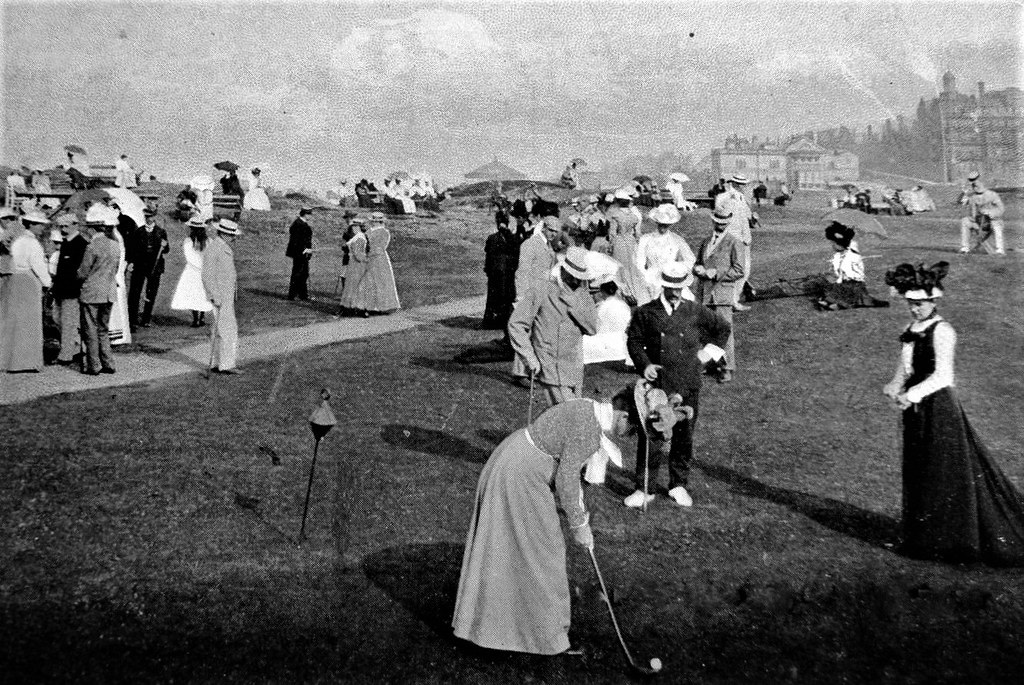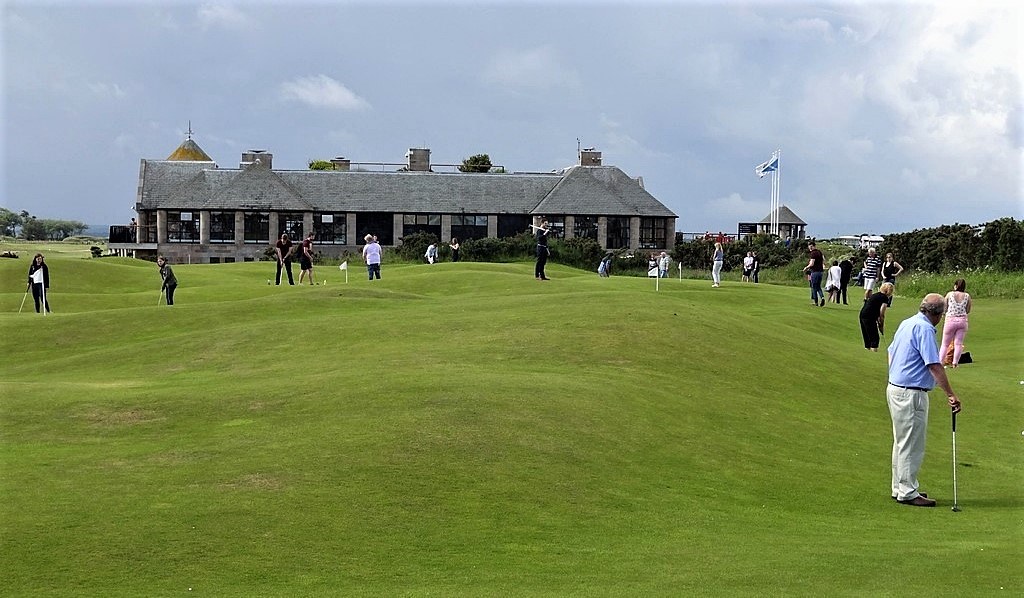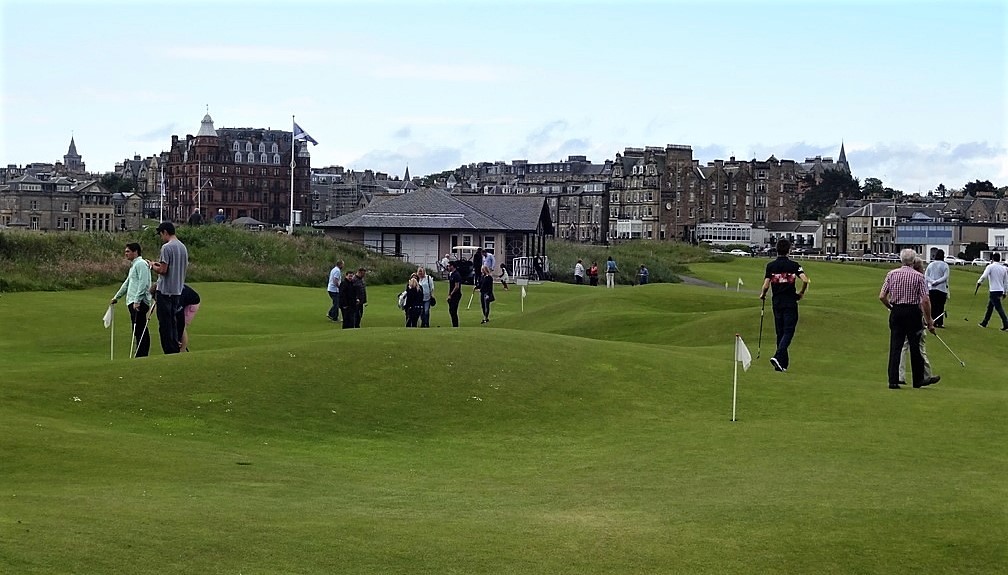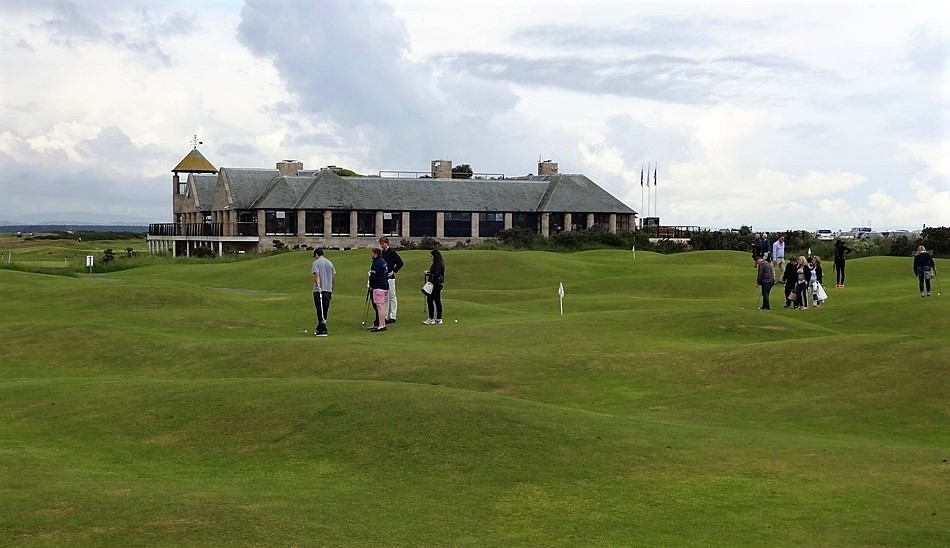


Old Tom Morris on the course in 1892.

Prior to 1860 local caddies laid out a small putting area near where Rusacks Hotel now stands. There being very little recreation available for proper young ladies, when the green was quiet a few young ladies would play. This mingling of classes caused a strained situation which demanded a solution. It was suggested that a piece of suitable land north of the Swilcan Burn was available. Old Tom Morris laid out a modest 9 hole pitch and putt course for the exclusive use of females which was the genesis of the St Andrews Ladies Putting Club in 1867. More land was acquired further north and quite quickly the course became smooth enough that only a putter was required. Other than the huge Himalaya mounds, the main feature is the fisherman’s path running through the course. In the early years this path would often flood, thus earning the title Jordan. Now tarmacked and rarely, if ever flooded, the path is still referred to as Jordan.
By the turn of the century club membership swelled to an incredible 400 members and 200 gentleman associate members. However, the onset of World War I decimated the ranks which led to the momentous decision in 1920 to allow the public to play for a modest fee...thank goodness! All comers are welcome, though I believe there is a minimum age requirement of three

. It is hard to imagine getting bored with the green, but a new layout is fashioned every Tuesday.
Having played the course many times two things are quite clear. First, a slow running green with large undulations works very well for entertainment purposes. Second, it is difficult to obtain true rolling putting surfaces on greens cut as high as the Himalayas. As a counterpoint to modern flat greens cut very short, I suggest there is reasonable middle ground with green speeds of 8-9 and undulations maybe half or two-thirds that (and not quite so sharp) as on the Himalayas.




The Old Course is but one reason St Andrews is the Home of Golf. 2016
Ciao